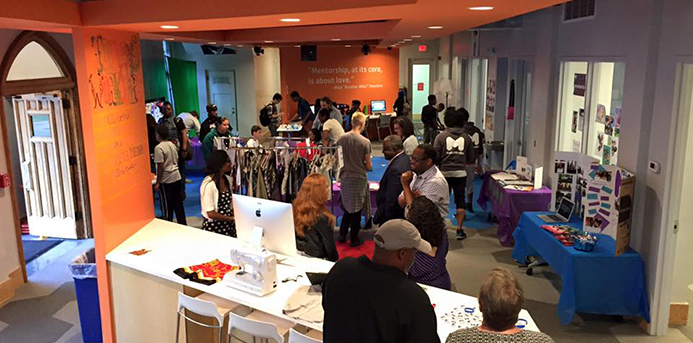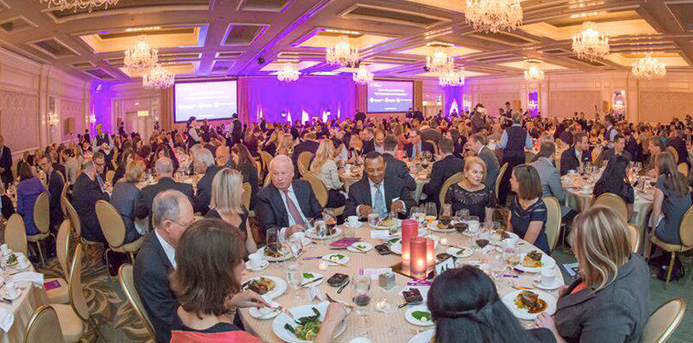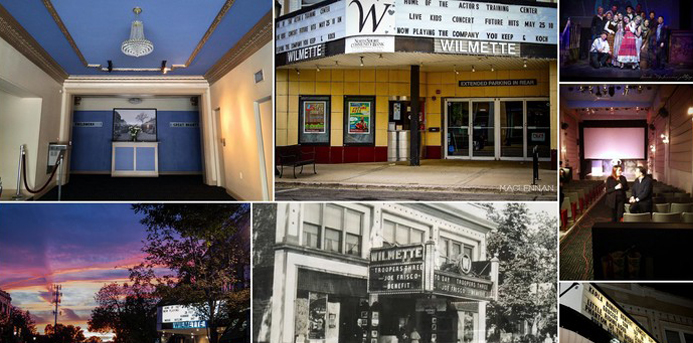Whether you’re helping with a small fundraiser for the first time, chairing a million dollar gala, or serving on a nonprofit board, you are charged with the same task — help the organization raise more money. Your best strategy for success will always be the same too:
- Demonstrate that donations are well spent.
- Share your passion for the cause.
- Tell an engaging story that makes others laugh, cry, think and want to take action.
- Grow virtuous circles of support.
Do these four things and others will want to help you. In fact, it will be difficult for them to say no! Because really, don’t most people hope to maximize the impact of their donated dollars, respond to passion, engage through well-told stories and want to be part of an effective network?
I’ve learned this through a quarter century of personal fundraising experience, chairing fundraisers small to large, including a Lyric Opera Wine Auction that raised more than $1.8 million during the recession.
More significantly, though, Make It Better Media’s amplification of the fundraising efforts of more than 1,000 nonprofits during the past decade really proves that this strategy works. Our most comprehensive media sponsorships ensure that nonprofits accomplish all four points and the organizations always report success. They raise more money, volunteers, attention from other media, and awareness.
Here are our 11 recommendations for anyone who wants to raise more money for their favorite nonprofit now.
1. Think and talk like a venture philanthropist
A venture philanthropist is anyone who wants to get the most impact for every dollar they donate. What differentiates them from other donors is their longterm, impact results orientation. Sometimes this involves more engagement with the organization to review outcomes and results rather than viewing it simply as a tax-deductible gift.
Some organizations apply the venture philanthropy model throughout all initiatives. These include The Chicago Public Education Fund, A Better Chicago, Invest For Kids, Multiple Myeloma Research Foundation and Lefkofsky Family Foundation.
There is no uniform venture philanthropy formula, but focusing on the following criteria, used by our Academy of Judges to determine the winners for our Philanthropy Awards and which echos the criteria donors care about most — transparency, governance, leadership and results, as well as finances — according to BBB Wise Giving Alliance, Charity Navigator, and GuideStar, will help you present your nonprofit as an attractive recipient of venture philanthropy support:
- Efficiency (What percentage of donations is put toward its mission? This is essentially the same as Charity Navigator ratings.)
- Effectiveness (Is the organization accomplishing its mission?)
- Leadership (Who are the champions doing the heavy lifting of fundraising and/or delivering a quality program?)
- Scalability (Is the infrastructure ready for rapid growth from a funds infusion that would include audience donations?)
- Excellence (Does the nonprofit deliver an excellent program?)
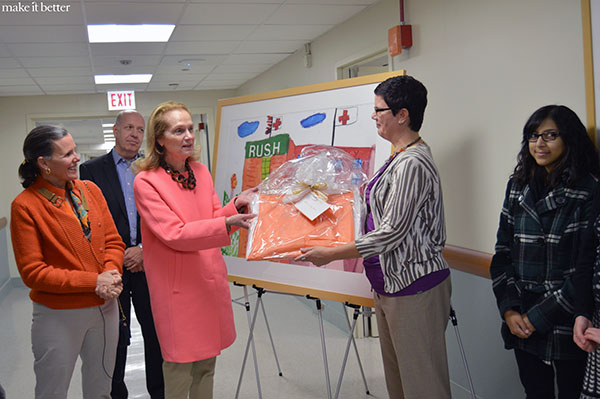
2. Find and share your passion
Why are you working to raise money for the organization? Understand why you care about the organization, and share your personal journey and passion for the cause. People respond to authenticity; they like to help. Former Chicago Bear Charles Tillman channels his inspiring passion for supporting critically ill children (his daughter Tiana had a heart transplant) into his Cornerstone Foundation.

The Multiple Myeloma Research Foundation was founded in 1998 by Kathy Giusti after she was diagnosed with multiple myeloma, a form of blood cancer. In May 2016, the foundation honored Michael and Andrea Rosengarden, who have made it their family’s mission to support efforts toward finding a cure after Andrea too was diagnosed with the disease.
There is a wealth of additional examples of this passion. Lindsay Avner used her family’s history of breast cancer and founded Bright Pink. New Trier students honored two young women who passed away by raising funds for a new Black Box Theatre at the high school. Shirley Ryan’s passion and support joined Pathways and Rehabilitation Institute of Chicago for the creation of the Shirley Ryan AbilityLab. Jan Tratnik turned loss from Alzheimer’s into action. And Lady Gaga founded the Born This Way Foundation in hopes of helping teens “feel brave enough to respond to bullying with love and acceptance, and to create a safe place for individuality.”
Once you identify your passion, it’s time to find ways to engage meaningfully with that passion. Tiara, a global company providing women’s leadership development, can help you do so. 80,000 Hours is another company that provides career advice for those “who want to have a social impact.” And Commongood Careers can help your organization find the best employees.
For more, read The Muse’s article on turning your passion for a cause into a career.
3. Tell an engaging story that brings the mission of the nonprofit to life
With an article or short video, demonstrate how one person, family or community has been helped. Make your audience laugh, cry, think and want to take action. As Professor Brady Josephson writes in “Nonprofits and the Story Wars,” “Tell more supporters stories. Tell more impact stories. Tell more transparent stories. Tell the founding stories. Tell stories that inspire people to act or share.”
Greg Cameron, executive director of The Joffrey Ballet, adds, “We encourage you to think about the mission of your organization and create a series of short stories that capture your values. Stories connect, engage, and create long-lasting relationships.”
Here are just a few of our favorite examples from our writers and nonprofit partners:
4th Annual Philanthropy Awards: Academy for Global Citizenship
Middle School Student Finds Mentorship, Inspiration at McGaw YMCA
Why These 10 Chicago Leaders Support the YMCA of Metropolitan Chicago (And You Should Too)
The People’s Music School Celebrates 40 Years, Honors Smashing Pumpkins’ Jimmy Chamberlin
4. Create virtuous circles of support
A virtuous circle is a network of people or organizations with shared interest, creating a spiral of events, each having a beneficial impact on the others, whether it’s local businesses donating items to the community school fundraiser, thereby generating goodwill that ultimately brings more of the community into their businesses, or major corporations that give back to the communities where they are based. This is a winning strategy that leads to better public institutions and businesses, happier employees or parents, and stronger communities. Win/win/win/win.
From start-up to behemoth nonprofit, the fundraising future belongs to collaborators able to connect sponsors and audience with a cause they are naturally inclined to support.
Rob and Ann Garrison, owners of Depot Nuevo and The Noodle restaurants in Wilmette, embody this practice, as do most of the businesses who win Make It Better’s annual audience choice Best Of awards. Their businesses support their communities. In response, their communities give them more business.
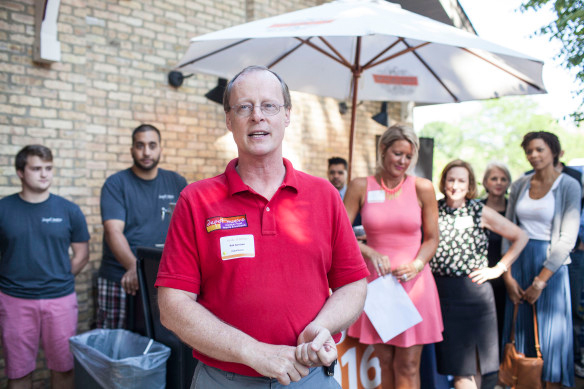
What’s true locally also works globally. Increasingly, corporations see that doing right by people and planet improves their bottom line and makes the world a better place. Walgreens long has proven this, as you can see in our Guide to Giving.
5. Harness the power of the internet
In our digital era, every organization needs an engaging website. Make it easy for your audience to learn about and donate to your organization online. Practice “reverse publishing” — putting your best content online first and pushing it to other sources, like print newsletters. Demonstrate collaborative excellence by citing and linking to other organizations doing excellent work too.
- Use social networks. Audiences naturally attracted to your mission and values will find you through these channels. For example, The Representation Project, founded by Jennifer Siebel Newsom, uses multiple social media action campaigns, including #NotBuyingIt/#MediaWeLike, #AskHerMore and #DisruptTheNarrative.
- Crowdfund. Think Kickstarter campaigns (like the one Wilmette Theatre did for their 100th anniversary), Omaze (make donations for a chance to win unique experiences with celebrities) and Giving Tuesday (watch for the opportunity to register your nonprofit for Forefront‘s #ILGive this upcoming November and find the data from 2016). Check out Top Ten Reviews’ Best Fundraising Sites of 2017 and Crowd101.com’s Ultimate List of Crowdfunding and Fundraising Websites.
6. Appeal to women, millennials, Chicagoans and collaborators
Did you know that women give more than men? Mounting evidence confirms this. Significantly, women don’t just give money. They engage further with nonprofits to which they donate — staying informed and sharing information with others, volunteering and networking to help. Women are the dominant users of most social networks too, helping to grow new audiences and support there as well. And as we mentioned in our Top 30 Chicago Female Philanthropists article, the Rehabilitation Institute of Chicago Women’s Board led the way for donations to the new Shirley Ryan AbilityLab. If you want to grow support for your nonprofit faster, appeal to women!
Engaging millennials is a wise move too. They inherently expect mission and meaning in most aspects of their lives. They pay extra for goods and services that give back and for unique experiences benefiting nonprofits. The sensibilities of these millennials are causing rapidly accelerating change in business, investing and philanthropy. Social Impact Investing and improved public service opportunities offered by corporations for their employees are good evidence of this. A recent New York Times article explains, “Millennials expect transparency, sophisticated storytelling and technical savvy from their charitable organizations. And many donors will not only give money, but will also volunteer and lend the force of their own social networks to a cause they believe in.”
Chicago is one of the most philanthropic cities in the United States. No hyperbole. In celebration of its 100th Anniversary in 2015, The Chicago Community Trust (CCT) commissioned a comprehensive study by Indiana University’s Lilly School of Philanthropy that established that across the board — individuals, families, foundations, corporations — Chicago out-gives the rest of the U.S. by as much as 50 percent.
The most successful civic organizations and cultural arts leaders are fostering more “out of the box” collaborations than ever before, developing new audiences and raising more money in the process. Examples of this in Chicago abound: Renée Fleming’s Chicago Voices, Yo-Yo Ma partnership with Chicago Symphony Orchestra’s outreach programs, Chicago History Museum’s annual Making History Awards, Chicago Cubs Manager Joe Maddon‘s Respect 90 Main Event and more.
7. Create easy ways for corporate employees to participate
Harness the power of companies and their employees. If you are a nonprofit with an assembly line-type task, make it easy for corporations to sign up as a team for service shifts. Bernie’s Book Bank has leveraged this well by making it easy for corporate teams to volunteer together for two-hour sessions. Feed My Starving Children is another popular model. If your nonprofit needs one-on-one volunteer mentoring, consider leveraging the internet as an easy platform for corporate employees to volunteer remotely during their work day. Both iMentor, which matches high school students with college-educated mentors, and TutorMate by former Philanthropy Awards winner Innovations for Learning do this well.
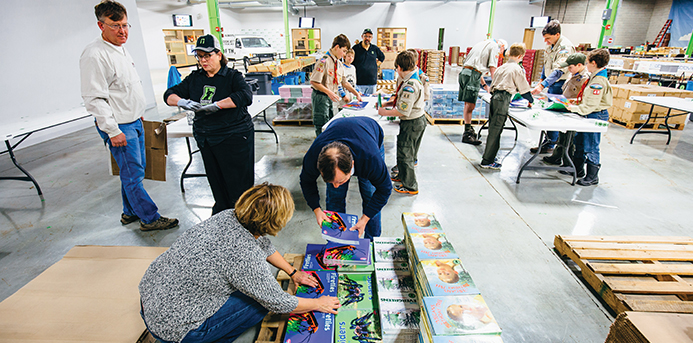
There are many companies that make it easy for their employees to connect with nonprofits by offering Volunteer Time Off as a standard benefit, including Hyatt Hotels and Salesforce. Other companies like Deloitte find additional ways to incentivize volunteer work. Make sure these companies are aware of your nonprofit; market yourself to them. And be strategic with your pitch to volunteers.
Chicago Cares is another great organization that helps companies looking to volunteer together connect with nonprofits who have specific service needs. You can also use Fortune’s 100 Best Companies to Work For list, which allows you to to find companies that specifically offer volunteer time off. And check out The Balance’s list of popular corporate giving programs for nonprofits.
8. Create unique experiences
People pay extra for unique experiences. This is true more than ever before.
Include food. People go out of their way for fabulous foodie events, and celebrity chefs love to participate.
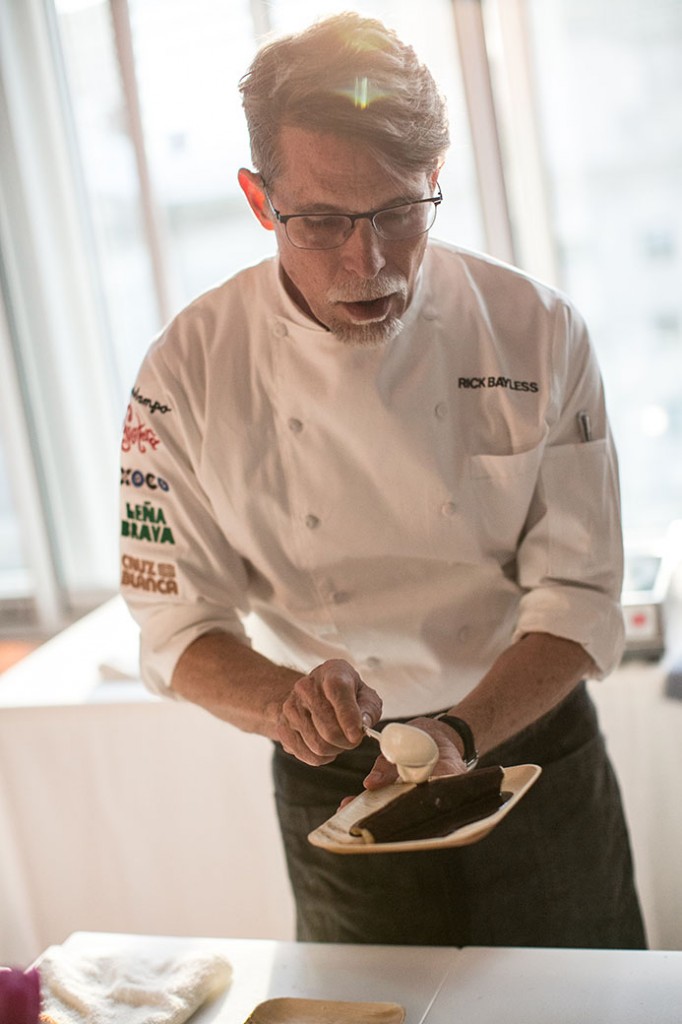
Be creative with your fundraising events by including unique experiences that are once-in-a-lifetime opportunities. MobileCause lists multiple unique fundraising ideas here, including a sports skills clinic with a local celebrity athlete, cupcake wars fundraiser with a local pastry chef, and a theater walk-on role with a renowned company. And find Greater Giving’s fundraising auction item ideas here. This includes being a guest conductor for a local orchestra; earning the right to name the next newborn animal at a local zoo, farm or aquarium; wearing the championship ring of a favorite local athlete for the evening; and more.
Or, learn more about Over The Edge Global, a special events company that helps nonprofits by engaging participants to raise money for that nonprofit while being given the opportunity to rappel down a local building — a unique experience that would not be easily forgotten.
9. Create giving circles
Giving circles allow groups of people to combine individual donations for greater impact. There are multiple giving circles in Chicago, including Impact 100 and the American Red Cross’ Tiffany Circle, which can also be found around the world. Members of United Way’s Women Investing in the Next Generation (WINGs) invest $3 million dollars every year to improve and expand quality early learning for kids. Rotary Clubs are another example of giving circles within local communities.
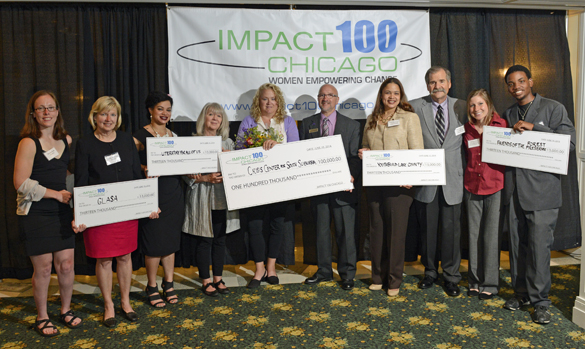
Women’s Boards are also essentially giving circles. The Women’s Board of Lincoln Park Zoo recently celebrated their 40th anniversary and has raised more than $25 million for the zoo.
To learn more, read Exponent Philanthropy’s introduction to giving circles.
10. Develop a compelling short video
We have long heard from our Philanthropy Awards winners that their prize video helps increase interest in their cause and secure donations. See two of our winner videos below, and find all of these inspiring videos here.
11. Make it easy for people to help
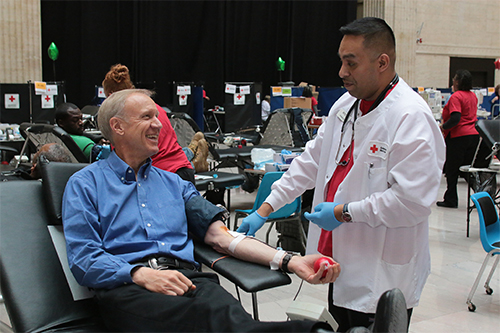
At Make It Better, we always want to make it easy for our readers to give back to causes close to their heart. Both our Better Makers and Give Time, Give Things, Give Support articles highlight opportunities that range from purchasing a UNICEF’ Kid Power band, which promotes activity while also giving food to malnourished children, to donating blood during the slow winter months for the American Red Cross.
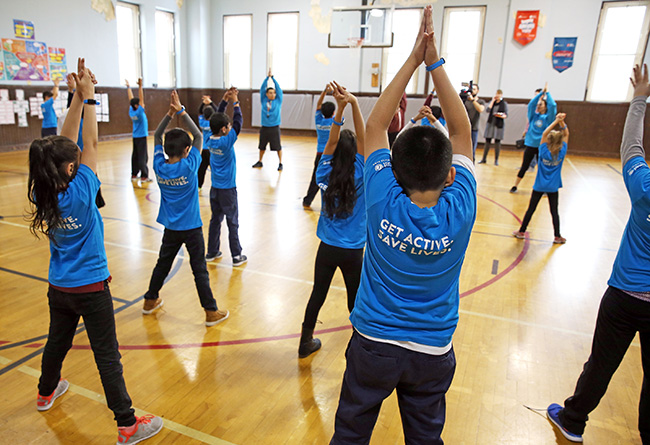
Include a “Get Involved” section of your website, as Ann & Robert H. Lurie Children’s Hospital of Chicago have done, so anyone who is interested can quickly and easily learn about upcoming events, donate, tell their story and more. Always make sure it’s easy for your audience to discover what you need, whether that’s volunteers, money or physical donations. And know that Make It Better is here to help you get the word out. Please fill out this form if you’re interested in being included in Give Time, Give Things, Give Support.
Now it’s time to go raise more money for your favorite nonprofit. Let us know how it goes! Did you create a successful fundraiser or find a unique way to engage volunteers? Share your story by emailing us at info@makeitbetter.net. You can also email us with questions, requests or suggestions.


